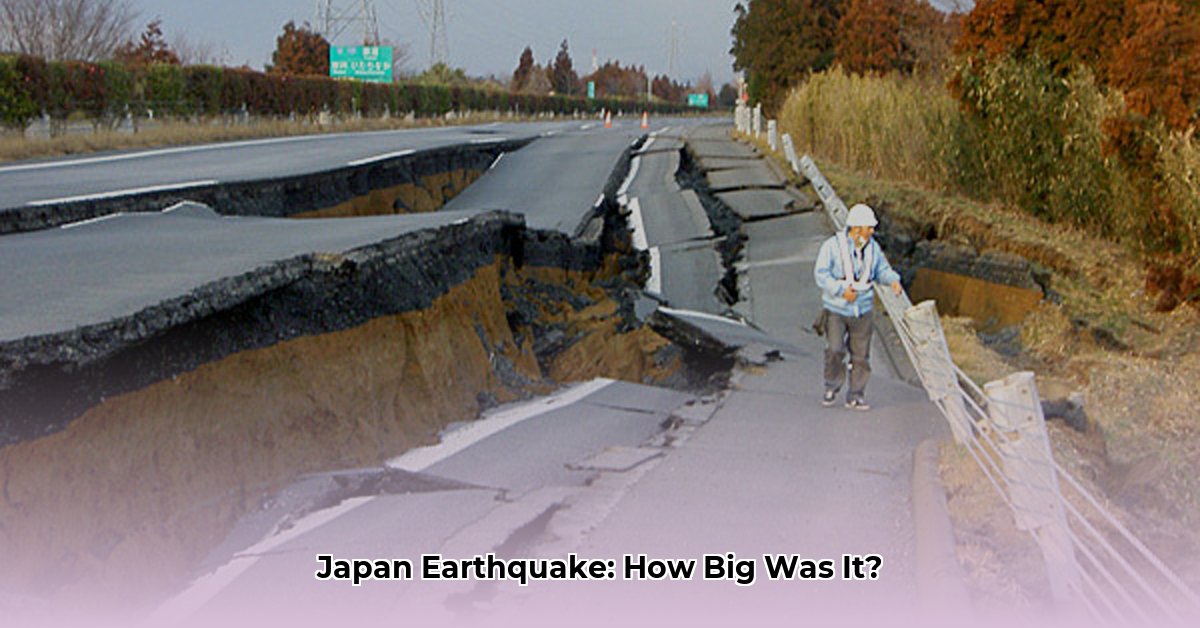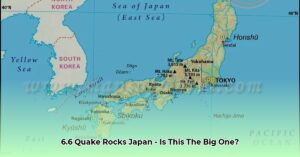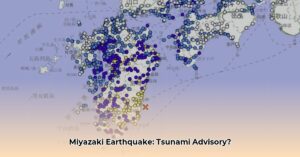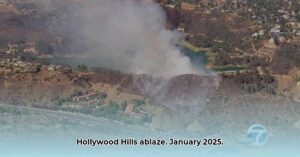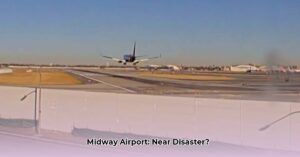Magnitude 6.6 Quake Strikes Kyushu, Japan – Latest Updates
A 6.6 magnitude earthquake struck near Miyazaki, Kyushu, Japan on January 13, 2025, at 9:19 PM local time. A tsunami advisory was issued for Miyazaki and Kochi prefectures but lifted shortly before midnight after a minor 20cm wave was observed in Miyazaki City. Initial reports indicate minimal damage with one minor injury reported.
Key Earthquake Facts
| Detail | Information |
|---|---|
| Date | January 13, 2025 |
| Time (Local) | 9:19 PM |
| Location | Miyazaki, Kyushu, Japan |
| Magnitude | 6.6 |
| Depth | 37 km (23 miles) |
| Tsunami Advisory | Issued and later lifted |
| Max. Tsunami Wave | 20 cm (Miyazaki City) |
| Reported Damage | Minor |
| Reported Injuries | One minor injury |
Why Did the Magnitude Estimates Change?
Initial reports estimated the magnitude as high as 6.9. The Japan Meteorological Agency (JMA) later revised this to 6.6 after analyzing more data. This is standard procedure, as early estimates are based on limited data from nearby seismic stations. As more data from distant stations becomes available, scientists can refine their calculations for a more accurate reading.
Tsunami Threat and Response
The earthquake’s location off the coast and substantial magnitude triggered an immediate tsunami advisory for coastal areas, prompting concern and evacuations. Although the observed tsunami wave in Miyazaki City was relatively small (20 cm), it highlighted the importance of swift action by authorities. The prompt lifting of the advisory brought relief to residents.
Japan’s Earthquake Preparedness
Japan’s stringent building codes and disaster preparedness strategies likely mitigated the severity of the damage. These measures, developed from decades of experience with seismic activity, are designed to withstand significant tremors. While some minor injuries and transportation disruptions occurred, the absence of widespread destruction highlights the effectiveness of these precautions.
The Nankai Trough: A Lingering Concern
The earthquake’s proximity to the Nankai Trough raises questions about future seismic activity. This subduction zone is known for its potential to generate larger earthquakes. While this event may not be directly related to the Nankai Trough, ongoing research is essential to understand the complex dynamics of this region and evaluate future risks. Some experts suggest this quake could be a precursor to a more significant event, while others caution against premature conclusions.
Ongoing Monitoring and Research
The JMA continues to monitor the region for aftershocks, which are common after significant earthquakes. These smaller tremors can pose a threat to already weakened structures and can be unsettling for residents. Ongoing research and analysis will provide more insights into the long-term implications of this event and contribute to improving earthquake prediction models.
Staying Informed
For the latest updates and official information, refer to the JMA and the USGS. Reliable information is crucial during and after seismic events.
What We Know About the Damage
While initial reports indicate relatively minor damage given the quake’s magnitude, assessments are still underway. Minor damage, including shattered glass, was observed at Miyazaki Airport Station. One person sustained a minor injury from a fall, and there were some temporary train disruptions. Importantly, no damage was reported at nearby nuclear power plants.
Impact on Infrastructure
While the impact appears limited, authorities are still evaluating the full extent of the damage to infrastructure. The temporary train disruptions at Miyazaki Station underscore the need for thorough inspections following seismic events.
What Caused the Earthquake?
Japan is located on the seismically active “Ring of Fire,” making earthquakes a recurring phenomenon. This quake was likely caused by the ongoing movement of tectonic plates, a constant process that builds pressure and eventually releases energy in the form of tremors.
Were there any injuries or casualties?
One minor injury was reported from someone falling during the quake. No casualties have been reported. This is a testament to Japan’s stringent building codes and preparedness for earthquakes.
Looking Ahead
While the immediate danger appears to have passed, aftershocks are expected in the coming days and weeks. Residents are urged to remain vigilant and informed. This event underscores Japan’s ongoing vulnerability to earthquakes and the importance of continuous research and preparedness.

